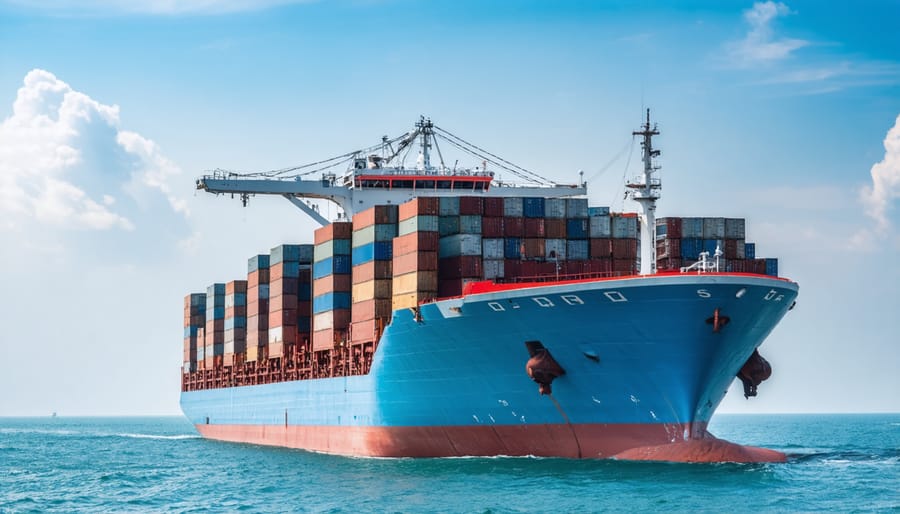Crafting a successful global location strategy demands precision, market intelligence, and strategic foresight in today’s interconnected natural stone industry. The decision of where to position extraction sites, processing facilities, and distribution centers impacts everything from operational costs to market access and competitive advantage. Leading companies leverage data-driven location analysis, combining geographic information systems (GIS) with deep market insights to optimize their international footprint. This strategic approach enables businesses to balance critical factors like raw material proximity, skilled labor availability, transportation infrastructure, and target market accessibility.
Beyond traditional cost considerations, modern global location strategies must account for emerging factors like sustainability requirements, geopolitical stability, and digital infrastructure capabilities. Successful implementation requires careful evaluation of local business environments, regulatory frameworks, and cultural nuances that can significantly impact operations. Companies that excel in global positioning create resilient, adaptable networks capable of serving diverse market demands while maintaining operational efficiency.
The key to mastering global location strategy lies in developing a systematic approach that aligns physical presence with long-term business objectives. This strategic alignment ensures organizations can effectively serve their markets while maintaining the agility to respond to changing industry dynamics and emerging opportunities in the natural stone sector.
Understanding Global Market Dynamics
Key Market Regions
The global natural stone market is dominated by several key regions, each with distinct characteristics and consumption patterns. North America, particularly the United States, remains a primary market driven by high-end residential construction and commercial projects, with a strong preference for granite and marble. Western Europe, led by Italy and Spain, demonstrates sophisticated taste in stone selection and maintains traditional architectural applications while embracing innovative designs.
The Asia-Pacific region, spearheaded by China and India, represents the fastest-growing market segment, fueled by rapid urbanization and infrastructure development. These countries are both major producers and consumers, with increasing domestic demand for luxury stone products. The Middle East continues to be a significant consumer of high-end natural stone, particularly in luxury residential and hospitality projects, with a notable preference for exotic and rare stone varieties.
Emerging markets in South America and Eastern Europe show promising growth potential, characterized by increasing construction activity and growing appreciation for natural stone’s aesthetic and durability benefits. These regions typically start with local stone varieties but gradually expand into imported premium materials as their markets mature.
Supply Chain Considerations
Efficient supply chain management is crucial for successful global location strategies in the natural stone industry. Transportation routes must be carefully evaluated, considering factors such as distance to quarries, processing facilities, and target markets. Maritime shipping remains the primary mode of transport for bulk stone materials, making proximity to major ports a significant advantage. Companies must also factor in inland transportation costs, including rail and truck delivery options to reach final destinations.
Modern logistics challenges include fluctuating fuel costs, container availability, and customs regulations across different regions. Enhanced supply chain transparency has become essential for tracking shipments and maintaining quality control throughout the distribution process. Weather-related disruptions and seasonal variations can impact delivery schedules, requiring robust contingency planning.
Cost considerations extend beyond basic transportation expenses to include storage facilities, handling equipment, and insurance coverage. Successful companies typically maintain multiple supply routes and strategic partnerships with logistics providers to ensure consistent material flow and minimize potential disruptions.

Strategic Distribution Hub Selection
Infrastructure Assessment
A comprehensive infrastructure assessment is crucial for successful global location strategies in the natural stone industry. This evaluation begins with analyzing transportation networks, including road quality, port facilities, and rail connections that facilitate efficient movement of heavy stone materials. Companies must consider both primary and alternative routes to ensure reliable delivery schedules and minimize disruption risks.
Storage facilities form another critical component, requiring assessment of warehouse availability, capacity, and specialized equipment for handling stone products. Climate-controlled environments may be necessary for certain stone types, while loading docks and material handling systems must meet specific weight and size requirements. The proximity of these facilities to major transportation hubs can significantly impact logistics costs and delivery times.
Support services infrastructure includes access to skilled labor, equipment maintenance facilities, and technical expertise. Companies should evaluate the availability of specialized workforce training programs, stone cutting and finishing facilities, and equipment suppliers in potential locations. Digital infrastructure, including reliable internet connectivity and inventory management systems, is equally important for maintaining efficient operations.
Additional considerations include utility infrastructure (power, water, waste management), emergency response capabilities, and environmental compliance facilities. These elements contribute to operational resilience and regulatory compliance. Companies should also assess the presence of complementary businesses, such as packaging suppliers and logistics providers, which can enhance operational efficiency and reduce costs.

Cost-Benefit Analysis
A comprehensive cost-benefit analysis is crucial when developing a global location strategy for natural stone operations. The primary considerations include labor costs, raw material availability, transportation expenses, and regulatory compliance costs across different regions. Companies must evaluate potential savings through foreign-trade zones and tax incentives offered by various jurisdictions.
Operating costs vary significantly between locations, with factors such as utility rates, property costs, and workforce availability directly impacting the bottom line. Developing markets often offer lower operational expenses but may require additional infrastructure investment. Meanwhile, established markets typically provide better infrastructure but come with higher costs.
Tax considerations play a vital role, as different countries offer varying incentives for manufacturing and distribution operations. These may include tax holidays, reduced rates, or special economic zone benefits. However, these advantages must be weighed against potential risks such as currency fluctuations, political instability, and regulatory changes.
Investment incentives from local governments can significantly offset initial setup costs. These might include land grants, workforce training programs, or infrastructure support. However, companies must carefully evaluate the long-term sustainability of these benefits and ensure they align with their overall business objectives and market access requirements.

Technology Integration
Inventory Management Systems
Modern inventory management systems have revolutionized how stone companies track and control their global stock. By leveraging smart stone sourcing technologies, businesses can maintain real-time visibility of their inventory across multiple locations, from quarries to distribution centers.
These digital solutions typically integrate barcode scanning, RFID tracking, and cloud-based management platforms to monitor stone movement throughout the supply chain. Companies can instantly access information about slab quantities, dimensions, and quality grades at each facility, enabling more efficient allocation of resources and faster response to market demands.
Advanced systems also incorporate predictive analytics to forecast inventory needs, minimize wastage, and optimize storage space utilization. Mobile applications allow field representatives to check stock availability and process orders on-site, improving customer service and reducing response times.
The implementation of these systems has proven particularly valuable for companies managing diverse stone collections across international markets, helping them maintain optimal stock levels while reducing carrying costs and improving cash flow management.
Real-time Analytics
Real-time analytics has revolutionized how natural stone companies manage their global distribution networks. By leveraging advanced data analytics and AI-powered demand forecasting, businesses can now make informed decisions about inventory placement, shipping routes, and market expansion opportunities with unprecedented accuracy.
Modern analytics platforms collect and process data from multiple sources, including point-of-sale systems, warehouse management software, and transportation logistics, to provide actionable insights. This real-time visibility enables companies to optimize their distribution networks by identifying bottlenecks, predicting seasonal demand fluctuations, and adjusting supply chain operations accordingly.
For natural stone distributors, these analytics tools are particularly valuable in managing the complexities of international shipping and varying regional preferences. By analyzing historical sales data, market trends, and customer behavior patterns, companies can better position their inventory across global locations, reducing transportation costs and delivery times while ensuring product availability matches local demand.
The implementation of real-time analytics has helped many stone suppliers achieve significant improvements in inventory turnover rates and customer satisfaction levels, while simultaneously reducing operating costs and environmental impact through optimized routing and storage decisions.
Local Market Adaptation
Cultural Considerations
Cultural sensitivity plays a pivotal role in successful global location strategies, particularly in the natural stone industry where traditions and preferences vary significantly across regions. Understanding local business etiquette, negotiation styles, and consumer preferences is essential for establishing strong partnerships and market presence. For instance, while direct communication is valued in Western markets, Asian business cultures often emphasize relationship-building and indirect communication styles.
Companies must also consider how different cultures perceive and use natural stone materials. While marble might be preferred for religious buildings in one region, granite could be the material of choice for similar structures in another. As global e-commerce distribution expands, businesses need to adapt their marketing approaches and product presentations to resonate with local audiences.
Local holidays, business hours, and working patterns should inform operational decisions. Additionally, color symbolism varies across cultures, affecting product selection and marketing strategies. Success in global markets requires companies to invest in cultural training for staff and develop locally-tailored business practices while maintaining consistent quality standards.
Regulatory Compliance
Navigating regulatory compliance across different regions is crucial for successful global location strategy implementation. Companies must carefully assess and adhere to local laws governing business operations, environmental standards, labor practices, and product certifications. This includes understanding import/export regulations, tax implications, and industry-specific requirements in each target market.
Environmental regulations often vary significantly between countries, particularly regarding quarrying operations and processing facilities. Companies must obtain necessary permits, conduct environmental impact assessments, and implement appropriate mitigation measures to maintain compliance. Labor laws also require careful attention, as requirements for working conditions, safety standards, and employee benefits differ across jurisdictions.
Product certification requirements can impact distribution strategies, as some markets mandate specific quality standards or testing procedures. Companies should maintain detailed documentation of compliance efforts and establish robust monitoring systems to track regulatory changes. Working with local legal experts and regulatory consultants can help ensure continued compliance and minimize potential disruptions to operations.
For companies in the natural stone industry, staying informed about changing regulations and maintaining proper certifications is essential for sustained market access and operational success.
Case Studies in Success
The success of global location strategies in natural stone distribution is best illustrated through real-world examples that demonstrate effective implementation and measurable results.
One notable case is Italian marble distributor Marmi e Graniti, which revolutionized its distribution network by establishing strategic hubs in key markets. By positioning warehouses in Dubai, Singapore, and Miami, the company reduced delivery times by 60% and cut transportation costs by 40%. Their hub-and-spoke model allows them to maintain optimal inventory levels while serving customers across multiple continents efficiently.
Brazilian granite specialist Granitos Unidos demonstrates how data-driven location decisions can transform operations. The company analyzed historical sales data, shipping routes, and market demands to establish processing centers near major ports in Santos and Vitória. This strategic positioning resulted in a 45% reduction in shipping costs and enabled same-day delivery to local fabricators, while maintaining efficient export capabilities to North America and Europe.
Turkish travertine producer Anatolia Stone showcases the power of combining local presence with global reach. By establishing distribution centers in both production-proximity locations and high-demand markets, they created a balanced network that serves both immediate regional needs and international customers. Their presence in key architectural markets like London, New York, and Shanghai helped increase market share by 35% within three years.
The success story of Australian sandstone distributor Stone Works Pacific highlights the importance of climate-conscious positioning. Their decision to establish climate-controlled warehouses in Southeast Asian transit points preserved stone quality during long-distance shipping while reducing delivery times to Asian markets by 50%. This strategy not only improved product quality but also opened new market opportunities in the luxury construction sector.
These cases demonstrate that successful global location strategies in natural stone distribution require careful consideration of multiple factors: proximity to quarries, transportation infrastructure, market demand, and environmental conditions. Companies that have excelled in this area share common approaches: data-driven decision-making, strategic positioning near major transportation hubs, and balanced distribution networks that serve both local and international markets effectively.
The global natural stone distribution landscape continues to evolve, shaped by technological advances, changing consumer preferences, and environmental considerations. As we’ve explored throughout this article, successful global location strategies require a careful balance of operational efficiency, market accessibility, and sustainable practices.
Key takeaways emphasize the importance of strategic warehouse positioning, robust logistics networks, and strong relationships with local partners across different regions. Companies that have implemented data-driven approaches to distribution planning have seen significant improvements in delivery times and cost efficiency, while maintaining product quality throughout the supply chain.
Looking ahead, the natural stone industry faces both challenges and opportunities. The increasing focus on sustainability will likely drive more companies to optimize their distribution networks for reduced carbon footprints. Digital transformation will continue to play a crucial role, with advanced analytics and automation helping to streamline operations and improve decision-making processes.
Industry leaders are expected to invest more in regional distribution hubs, especially in emerging markets where demand for natural stone products is growing. Additionally, the trend toward just-in-time delivery and customized solutions will require more flexible and responsive distribution networks.
Success in global natural stone distribution will increasingly depend on adaptability, technological integration, and a deep understanding of local market dynamics. Companies that can effectively balance these elements while maintaining sustainable practices will be best positioned for future growth and market leadership.










